Dear Fellow Dreamer,
In Western Quebec, where I live, September brings crows. They flap and glide and call to one another above our suburban yard and the nearby meadows, woods, and rivers. Crows spark my memories of walking in the fields of County Armagh, Northern Ireland, while I was dreaming up my novel, The Shining Fragments. And collecting feathers.
I love these intelligent birds.

Last week, I shared an excerpt from Chapter 3 of my book, Birdlight: Freeing Your Authentic Creativity. It’s about the robin and being true to yourself—trusting in your own unique character and calling. Today, I’m sharing two short sections from Chapter 4: “The Crow and the Raven: Freeing Your Vision, Intuition, and Action.” In the book, I describe the crow as a master caller and collector. Since this bird and his edgy cousin, the raven, have many different calls, I draw a parallel with how we, as creators, are “called” in many different ways to serve our dream. And when we answer? Magic happens.
The first and most essential call I describe in Birdlight is “the call to vision”—by which I mean to envision—that creative project or part of life you’d love to bring into form.
The Art of Living from a Vision
As a transformation coach, I’m trained and experienced in teaching a specific, powerful technique for creating a personal vision. In my upcoming talk—the first in the Wonders Within Video Series for paid subscribers—I’ll be providing step-by-step guidance on how to determine, set down, and work with your own personal blueprint for creative fulfillment. If you’ve never done that, and would love to, this is a great opportunity. And if you’ve worked with me before, either in a Vision Workshop or as a coaching client, this may be the perfect time for you to revisit, reimagine, and re-energize your vision for success.
Do you have a clear notion of what you’d love to create? Or are you searching? No matter what your situation is, if you’re committed to gaining clarity and moving forward, then I’m committed to ensuring you receive value in this new series.
Now to Birdlight, and a little of the history and lore surrounding both the crow and the raven—birds I view symbolically in the context of the creative process. There’s so much more in this chapter. Yet these brief excerpts will give you a place to start. And if you have stories about how crows or ravens have shown up meaningfully (perhaps even magically) in your life, please share them.
It’s been fun reproducing the following short pieces on Substack, where I’ve been able to insert photographs and links to a few of the books I loved while writing this one. Maybe you’ll find a treasure here—something to bring home to your own creative thinking and dream-building. I hope so.
Please note: The recording below isn’t the same as my reading in the Birdlight audiobook. Here on Substack, I’ve provided additional commentary.
From Birdlight…
Black Feather
To me, the bird that most readily signals magic in the ordinary is the common crow. How many times have you stopped to locate its lusty caw? Have you felt awe in beholding those blue-black wings flapping and twitching atop a power pole, or swooping down to a ditch in which the bird then deftly feasts? Have you ever gasped in wonder (or even, perhaps, shivered) to find a perfect black feather in the grass? Picking and strutting, the crow reminds us that real treasure exists in the everyday world.
Alas, in recent centuries in the West, these intelligent and highly social creatures have had a bad rap. Some have considered crows and ravens unsettling pests or, worse, portents of doom. Carrion eaters, these edgiest members of the Corvidae family, were associated with death in days when European ancestors caught them dining on dead livestock, or plucking the eyeballs from slain soldiers strewn on battlefields. In Shakespeare’s time, the birds were considered to be evil harbingers of death. Macbeth, the classic study of murder and its bloody consequences, is a drama rife with black-winged augurs. Edgar Allan Poe didn’t like the birds, either; his poem “The Raven” helped to make the crow’s big cousin into the original goth totem—an icon of gloom. In her 1995 book Bird Brains, Candace Savage recounts that as recently as 1989, “members of the British House of Lords rose in outrage against the suggestion that they [crows] be protected by law.” She goes on to state that in North America, “in many rural areas, taking potshots at magpies and crows is still seen as a respectable pastime—indeed a public service.” A defender of corvids, and a well-studied, persuasive enthusiast, Savage ably supports the claim that crows and ravens are sensitive, skilled, and complex creatures deserving of human respect and protection.
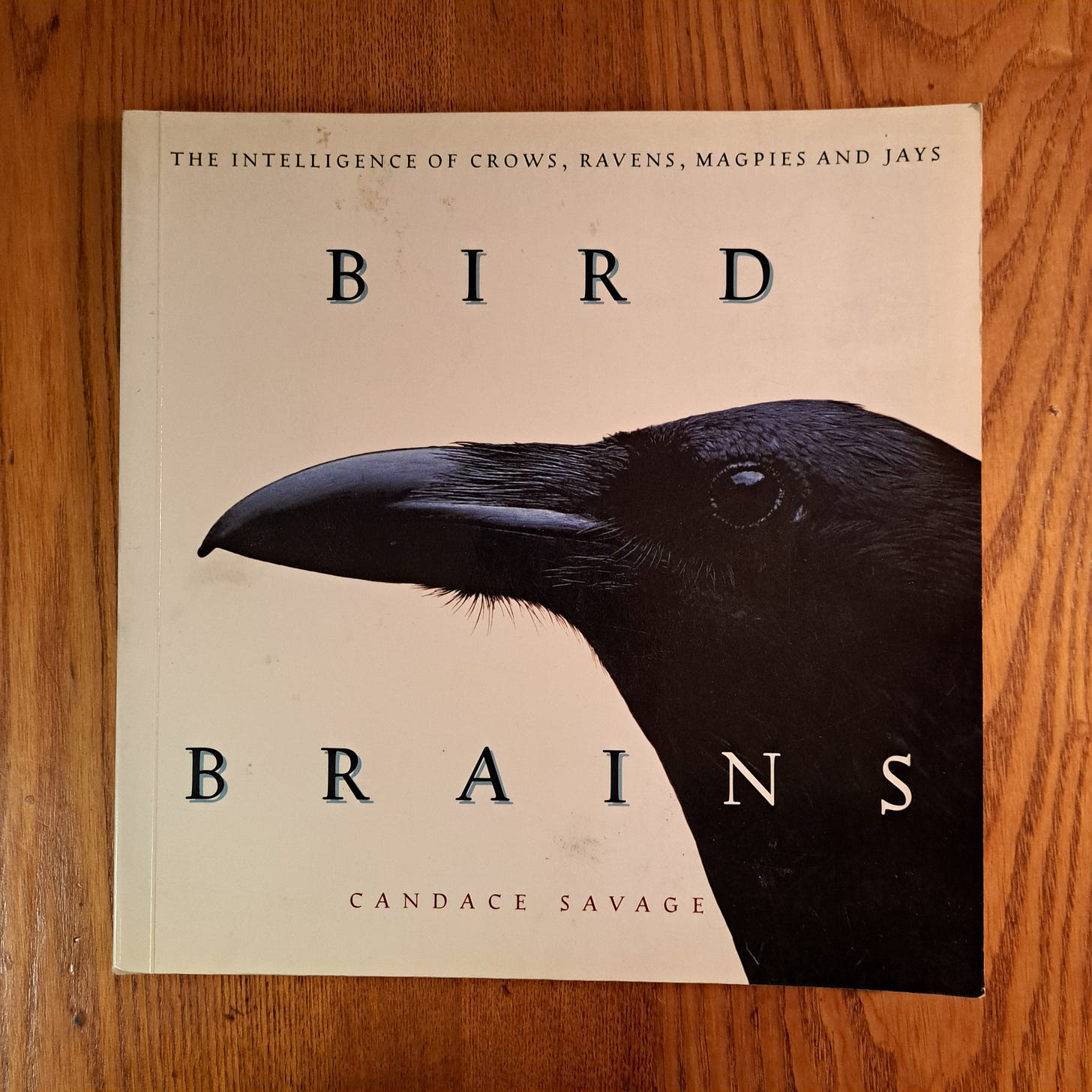
In fact, throughout history and across cultures, more often than not, crows and ravens have been respected—even revered. In her engaging work Ravensong, author Catherine Feher-Elston places these birds in a much older, broader, and more spiritual context: “Many European societies once honored the Raven, the Earth Mother, and all of the natural powers those entities represented. Ravens and crows were believed to be omniscient, to know all things past, present, and to come.” She cites various cultures that regarded the birds as emblems of wisdom, magic, medicine, and leadership. Feher-Elston writes, “It is said that Odin, father of the Norse and Teutonic gods, was accompanied in his travels by two ravens, Thought and Memory; he sent them out to survey the world each morning, and instructed them to bring back all the news to him.” She goes on to point out that almost all Native peoples of the Americas have viewed crows and ravens as mysterious, mischievous, and sacred tricksters, “shamanic… associated with healing, magic and successful hunting.” Native peoples of both the east and west coasts have associated these birds with divinity. “They are almost always considered to be messengers between the living and the spirit worlds,” writes Feher-Elston. Perhaps that’s why, to this day, many feel crows put us in touch with our intuition.
And our creativity.
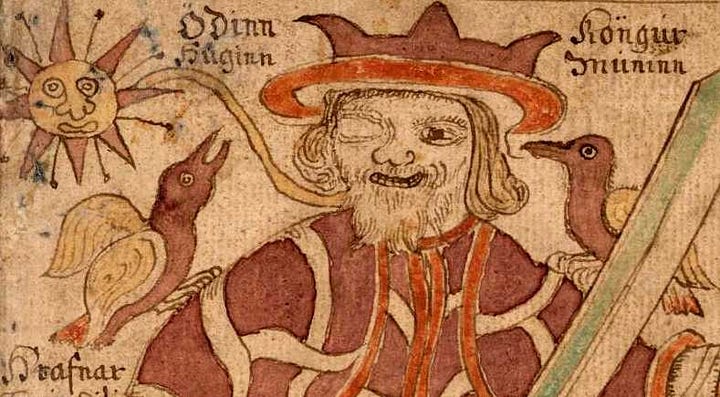
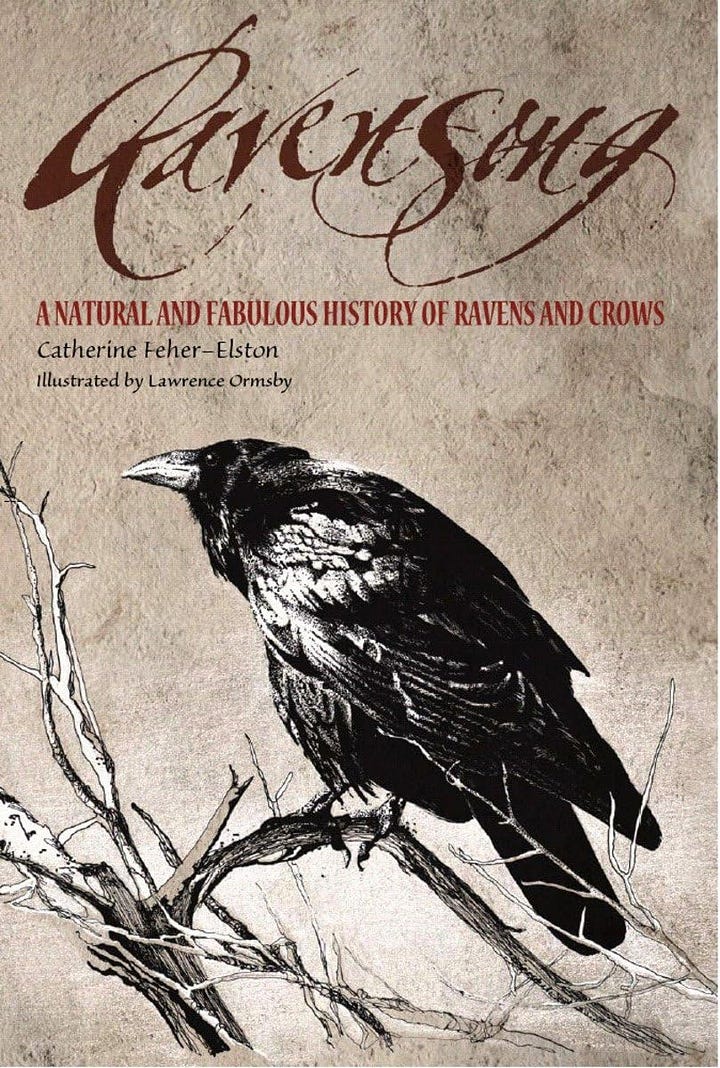
The Raven
This story of Crow’s big cousin comes from the Pacific Northwest Coast, where the Native peoples of North America have a long tradition of honoring Raven as a divine light-bearer, holy trickster, and emblem of transformation. For the early inhabitants of Beringia, Raven didn’t come down the coast, as the indigenous people once had, but had always been there—a magic and powerful creator. According to Haida myth, Raven grew restless with the light-filled world he’d made. Artist Bill Reid and cultural historian Robert Bringhurst recount the tale in “The Raven and the First Men”:
“He [Raven] gave a great sigh, crossed his wings behind his back and walked along the sand, his shiny head cocked, his sharp eyes and ears alert for any unusual sight or sound. Then taking to the air, he called petulantly out to the empty sky. To his delight, he heard an answering cry—or to describe it more closely, a muffled squeak. At first he saw nothing, but as he scanned the beach again, a white flash caught his eye, and when he landed he found at his feet, half buried in the sand, a gigantic clam shell. When he looked more closely still, he saw that the shell was full of little creatures cowering in terror of his enormous shadow....
“But nothing was going to happen as long as the tiny things stayed in the shell, and they certainly weren’t coming out in their present terrified state. So the Raven leaned his great head close to the shell, and with the smooth trickster’s tongue that had got him into and out of so many misadventures…he coaxed and cajoled and coerced the little creatures to come out and play in his wonderful, shiny new world.”
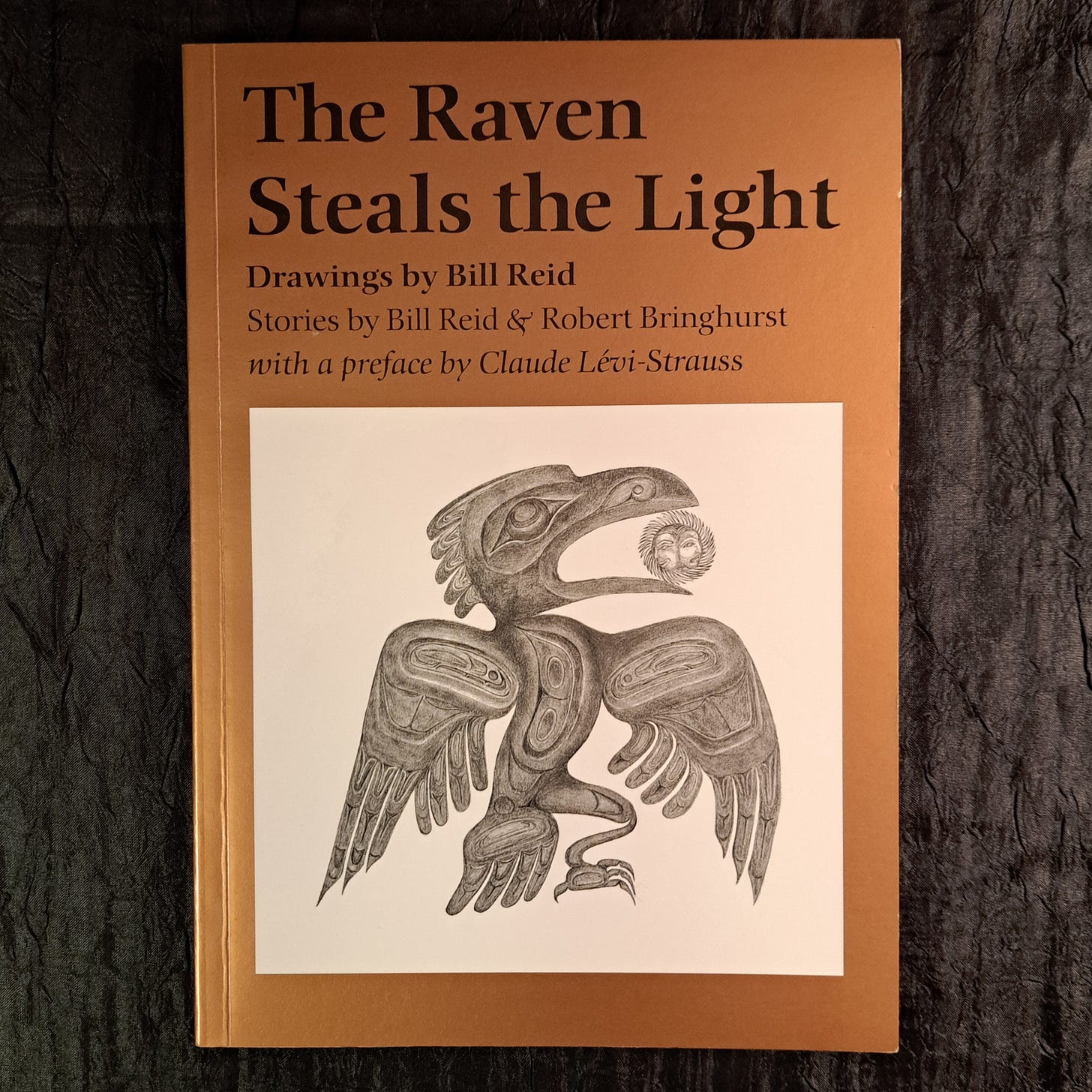
This myth serves as an allegory for the creative process. Each of us, a being of great power, calls out to a seemingly empty sky. So often we glide on the dark wings of restlessness, yearning, and creative potential, searching the world we’ve made for inspiration. Then something catches the eye—a flash! a gleam!—a body of thought, beckoning, like that clam shell. In the books we’ve filled, we discover our own ideas calling us back to find them: an entire creative populace just waiting to be coaxed forth. “But nothing was going to happen as long as the tiny things stayed in the shell….” I love this moment of tension in the process, when the divine bird must reassure the shell’s inhabitants to step forward. They cower in the creator’s shadow as our own dreams do, timid creatures who must be loved into the light of realization.
We are the creators and the created, the seekers, the finders and the found. Each of us must become that beautiful trickster, coaxing our own “first thoughts” into the light of consciousness and our own faith that we can transform what begins as a “muffled squeak” into a work of art.
Quote of the week:
“The world is full of magic things, patiently waiting for our senses to grow sharper.”
—W.B. Yeats
Video of the week:
What’s ahead:
Next week, I’ll publish a new poem on Substack and send it to you as my Friday letter. It’s timely.
Fall is the season of shorter days and longer nights—a great spell for any of us to gain clarity on our dreams and take action for them in peaceful, centred, soul-aligned ways. “The crow’s black wings remind us that all creation begins in the dark.” Let your vision be a light. On Sunday, September 29th, paid subscribers will receive my first Wonders Within video, Wings for Dreaming: How to Receive, Write, and Soar with Your Creative Vision.
After a short break, my weekly letters will resume on Friday, October 11th.
Themes for October: Ancestors, Family Stories, Ghosts.



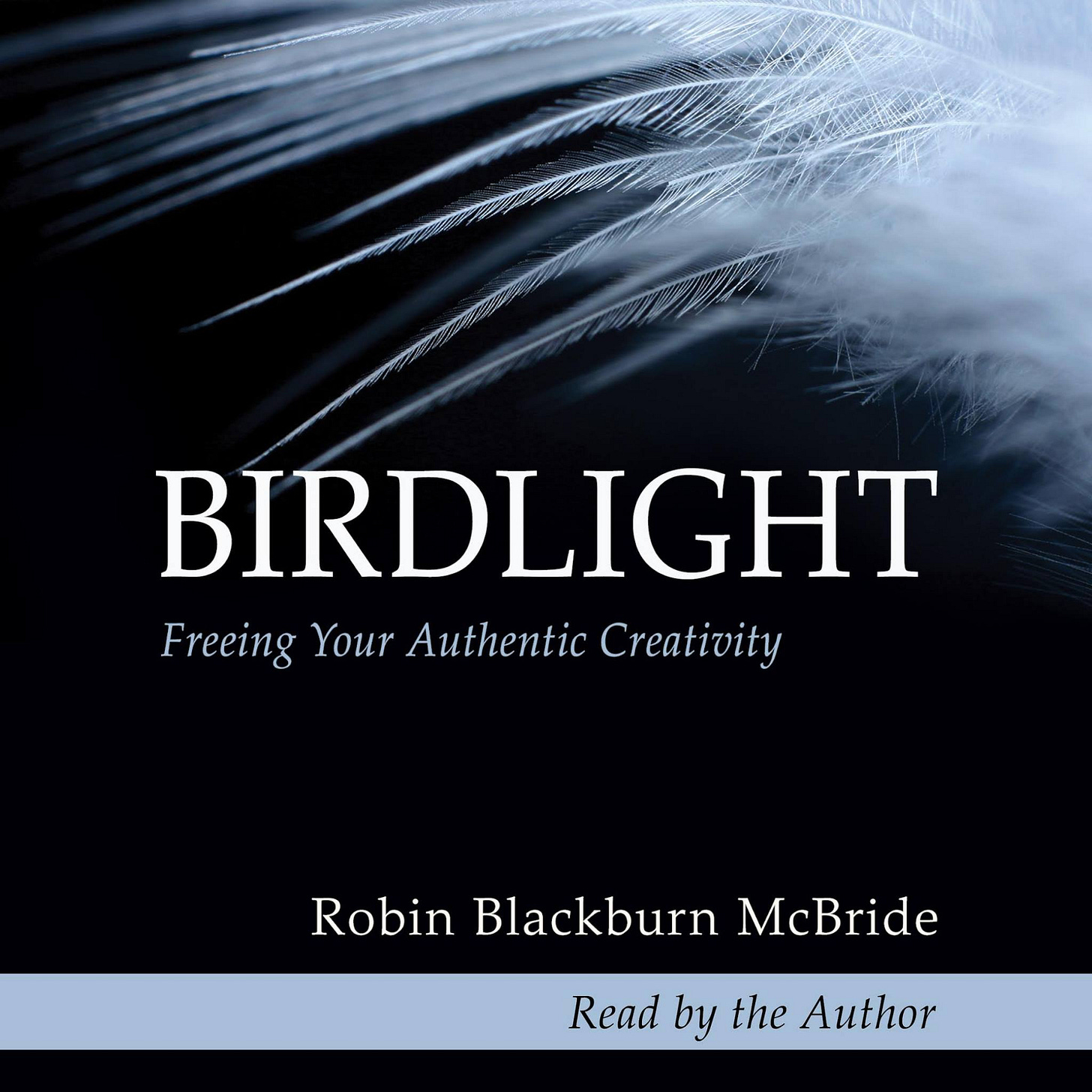

What are the difference between crows and ravens? Aren’t they same?
About a vision
It is great to have vision and that’s so kind of you to help your fans to create clear one.
However, most of situations of business and study and jobs in some places over the world are complicate for some reasons.
Anyway, my vision is about to ease difficulties of work regarding routinely procedures through working with foreign experiences.
This was so interesting! I never knew we had Ravens here in Massachusetts and then a bunch of them appeared 4 years ago at the beginning of the pandemic. I was outside and walking the woods a lot and heard the call of what sounded like a woman screaming. I discovered it was a Raven. They perch on a cell/communication tower near my house. I had no idea they were related to things creative and spiritual but it was during the time I "discovered" them that I began exploring mindfulness and Reiki and getting back to my writing.